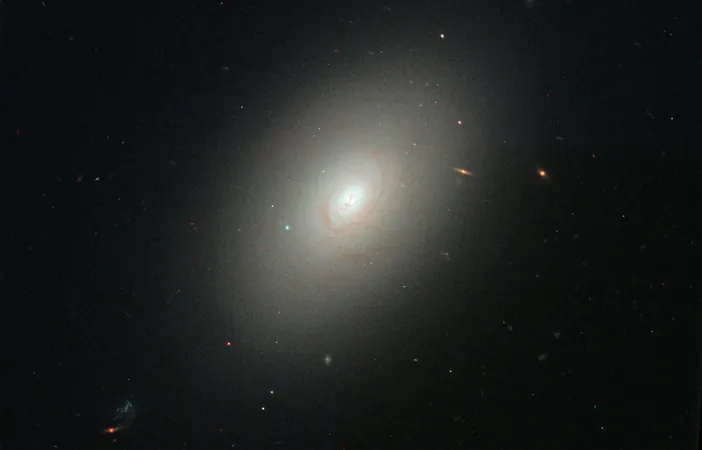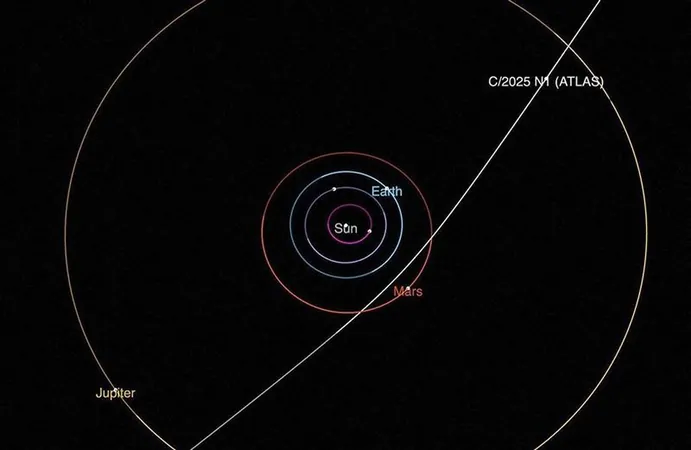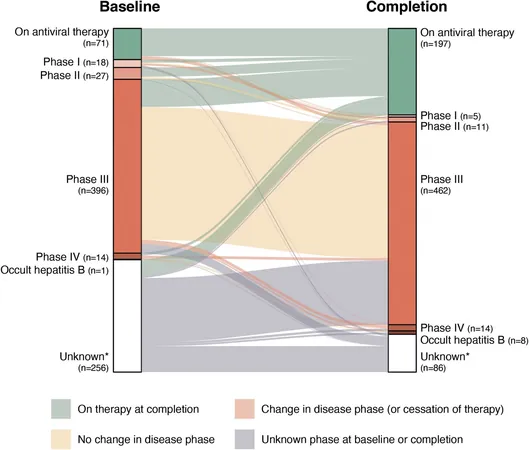
Astronomers Unearth 'Zombie Galaxies' in Deep Space: A Stellar Comeback!
2025-06-07
Author: Emma
The Mystery of Star Formation Halted!
Understanding why star formation suddenly stops is one of the most enduring puzzles in astrophysics! As the Universe ages, galaxies transition from vibrant hubs of star activity, illuminated by the brilliant blue glow of new stars, to hushed, quiescent spaces—a phenomenon scientists term 'quenching.' However, groundbreaking research using Hubble Space Telescope data suggests that some of these so-called 'quenched' galaxies might not be as lifeless as believed.
Meet the Zombie Galaxies!
Led by Michael Rutkowski in Minnesota, a team of researchers has identified what can be termed 'zombie galaxies.' These are galaxies that, while classified as quenched, are still mysteriously experiencing sporadic bursts of star formation. Remarkably, the galaxies in question are among the most massive in the Universe—precisely the type one would assume had long ceased forming new stars.
Unearthing Cosmic Clues
The researchers utilized data from the UVCANDELS survey, part of a series of deep imaging studies conducted by Hubble. They focused on galaxies boasting a stellar mass exceeding 10 billion times that of our Sun—excluding those with active black holes to ensure a pure sample.
Signs of Cosmic Life?
These galaxies date back 5 to 9 billion years, a period just following the peak of cosmic star formation rates. Upon examining the 1,067 galaxies remaining in their sample, the team noted that they resembled the large, inactive elliptical galaxies we typically associate with halted star formation.
The Ultraviolet Revelation
What’s particularly fascinating is the ultraviolet observations collected for these galaxies. Massive, young stars shine brightly in the ultraviolet spectrum, which can unveil otherwise hidden star formation activity. The researchers discovered that 15% of these seemingly dormant galaxies were actually glowing brightly, indicating they had recently formed a surprising 10% of their stars within the last billion years—a fantastic resurgence for such colossal systems!
The Rebirth of Galaxies: What's the Secret?
But how do these galaxies come back to life? One possible explanation could be galaxy mergers. When a younger system merges with a massive galaxy, it can provide a fresh influx of gas for star creation. Despite this, the research suggests that such mergers are likely not the full story. The absence of a correlation between the density of a galaxy's environment and its recent star formation reduces the chances of mergers being the primary cause.
Strange Cosmic Dynamics at Play?
So, what exactly is happening? It seems there are internal processes at work that remain enigmatic. Interestingly, it’s postulated that the quiet supermassive black holes at the centers of these galaxies might play a role in this unexpected revival!
Future Investigations Await!
Plans are already underway for more detailed imaging and spectral analysis of these intriguing zombie galaxies. After all, who doesn't love a good zombie movie?









 Brasil (PT)
Brasil (PT)
 Canada (EN)
Canada (EN)
 Chile (ES)
Chile (ES)
 Česko (CS)
Česko (CS)
 대한민국 (KO)
대한민국 (KO)
 España (ES)
España (ES)
 France (FR)
France (FR)
 Hong Kong (EN)
Hong Kong (EN)
 Italia (IT)
Italia (IT)
 日本 (JA)
日本 (JA)
 Magyarország (HU)
Magyarország (HU)
 Norge (NO)
Norge (NO)
 Polska (PL)
Polska (PL)
 Schweiz (DE)
Schweiz (DE)
 Singapore (EN)
Singapore (EN)
 Sverige (SV)
Sverige (SV)
 Suomi (FI)
Suomi (FI)
 Türkiye (TR)
Türkiye (TR)
 الإمارات العربية المتحدة (AR)
الإمارات العربية المتحدة (AR)